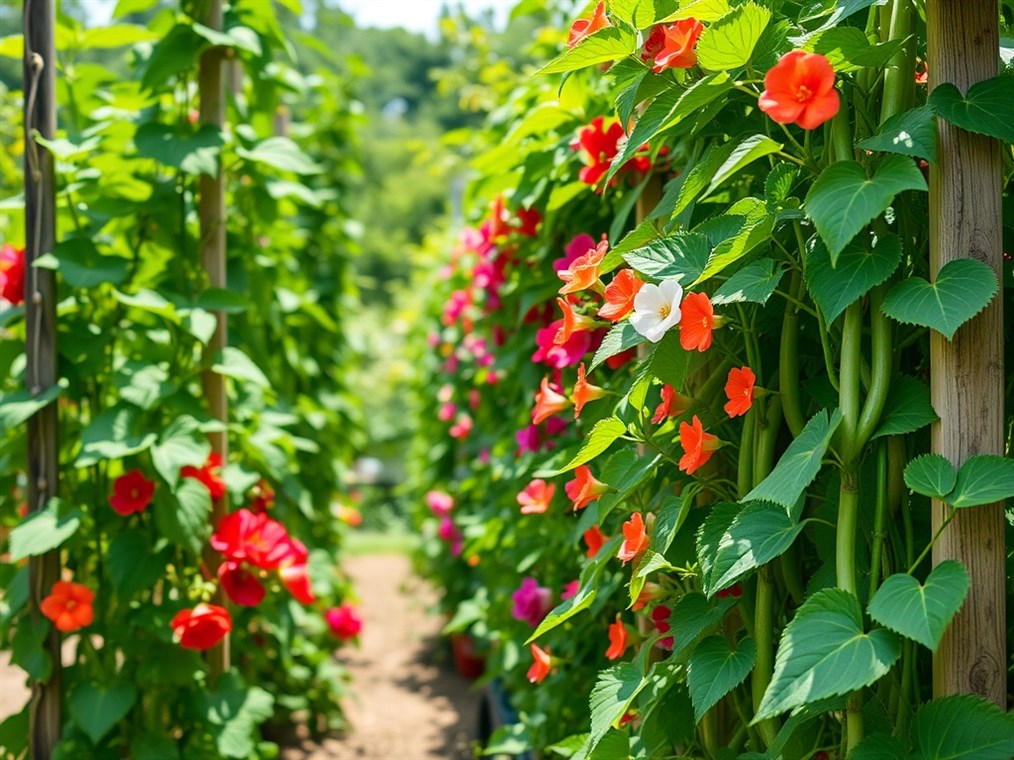Why Are My Runner Beans Stringy? Let’s Get to the Bottom of This!
Runner beans: those vibrant climbers promising a summer bounty. But sometimes, instead of crisp, tender goodness, you end up with pods tougher than old shoe leather. Stringy runner beans – we’ve all been there, right? So, what gives? Why do these beauties sometimes turn into a disappointment? Let’s dig in and figure out how to keep those beans deliciously tender.
First things first, the biggest culprit is often simply time. Think of it like this: you wouldn’t leave a cake in the oven forever, would you? Same goes for runner beans. They’re at their absolute best when they’re young and the little beans inside are still pale and undeveloped.
How do you know when to pick ’em? Well, aim for around 6-8 inches long. But honestly, sometimes I even pick them a bit smaller, around 4 inches. Trust me, you’ll get that melt-in-your-mouth texture. And here’s a pro tip: the more you pick, the more they produce! Try to harvest every day or two. It might sound like a lot, but it’s worth it for bean perfection.
Now, let’s talk water. These guys are thirsty! Imagine trying to run a marathon without a drink – not fun, right? Runner beans feel the same way. A good, regular watering, especially when they start flowering and setting pods, is crucial. I learned this the hard way one year when I was a bit neglectful. The result? Stringy city!
Mulch is your friend here, too. A nice layer of organic mulch around the base of the plants helps keep the soil moist and happy. Think of it as a cozy blanket for your beans.
Believe it or not, the variety you choose can also make a difference. Some runner beans are just naturally more prone to stringiness than others. It’s like some people are just naturally better at dancing! If you’re tired of the stringy struggle, look for “stringless” varieties. ‘Polestar’ and ‘White Lady’ are two that come to mind. ‘Polestar’ is a real workhorse, churning out tons of stringless pods all season long. ‘White Lady’ is another solid choice – reliable and productive.
And while we’re at it, let’s chat about the environment. Just like us, runner beans can get stressed out by extreme heat. Plus, good soil is key. Before planting, give your soil some love with compost or well-rotted manure. They’ll thank you for it! Also, avoid planting beans in the same spot year after year. It’s like eating the same meal every day – eventually, you’ll get tired of it! Rotate your crops to keep the soil healthy and happy.
So, what if you’ve done everything right and still end up with some stringy beans? Don’t throw in the towel! There are ways to salvage them.
First, try “stringing” them. Use a vegetable peeler or knife to remove those tough strings along the sides. It’s a bit of extra work, but it can make a big difference. If they’re really tough, consider shelling them and cooking the beans inside. We call them “shellies” in my family.
And if all else fails, soup is your best friend. A long simmer will soften those pods right up, and the flavors will all meld together beautifully. Or, get creative and make some chutney or pickles. A runner bean glut is a perfect excuse to try something new! You can even freeze them for later.
The bottom line? Stringy runner beans don’t have to be the end of the world. With a little know-how and some TLC, you can enjoy a season of tender, delicious beans straight from your garden. Happy growing!

